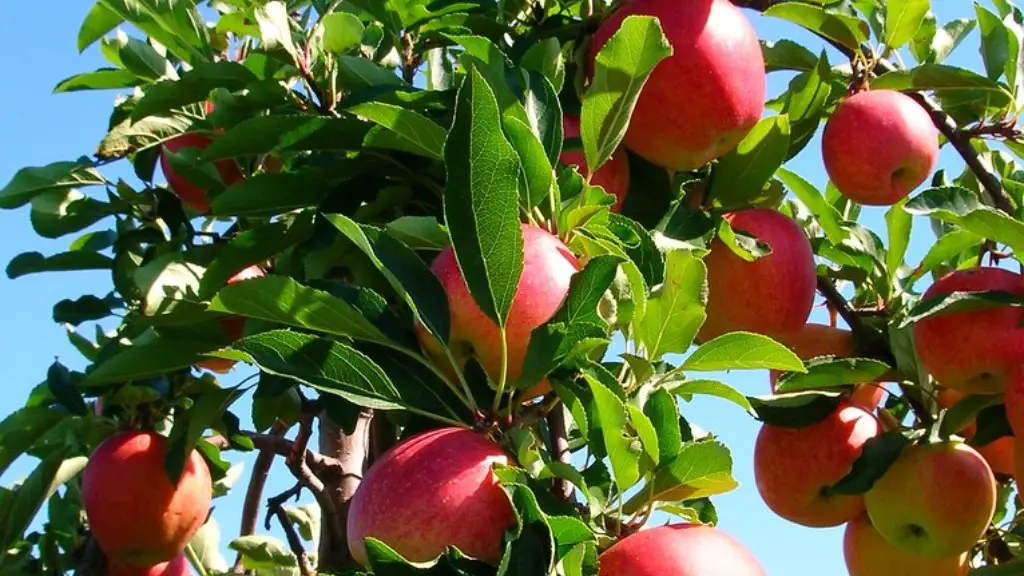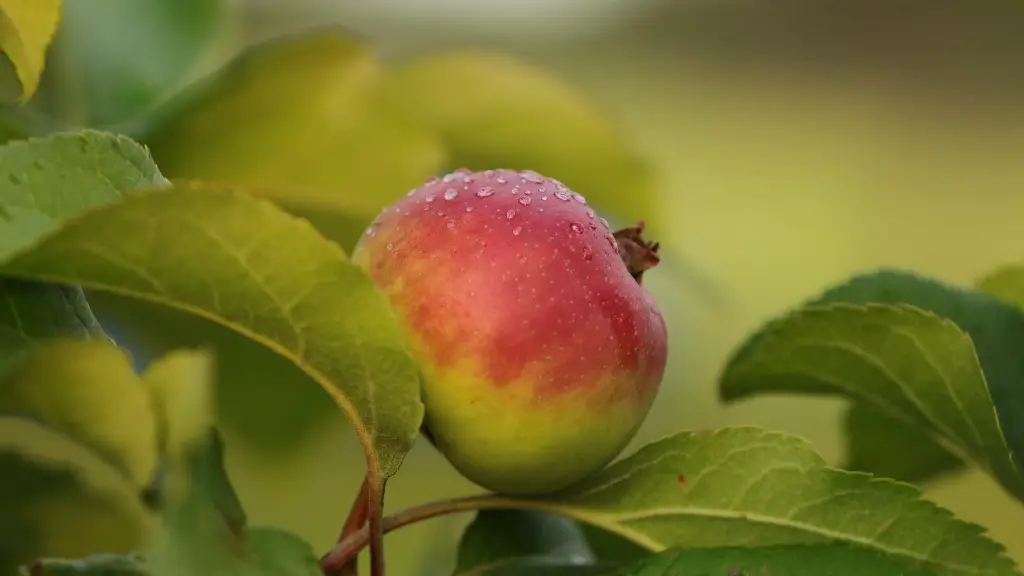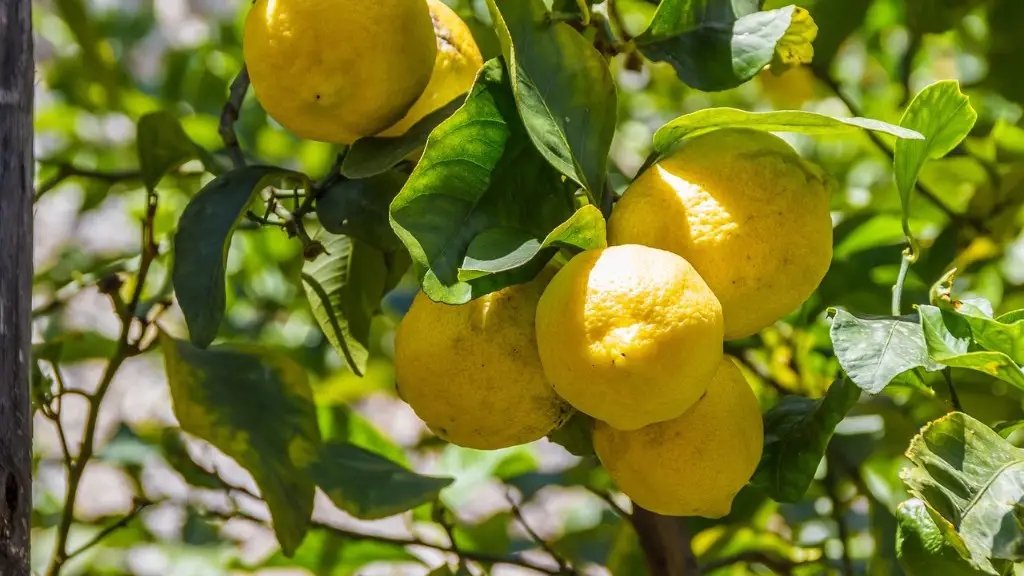What size container for avocado tree
Growing an avocado tree can be a rewarding experience, and with the right care and attention, you can have a successful and bountiful harvest of your own homegrown avocados. One key part of caring for your avocado tree is making sure that it’s in the proper size pot. The size of the container you use for your avocado tree will decide many important factors, such as its size, health, and overall yield.
It’s important to know that the size of the container you use will impact the size of your avocado tree. For example, a tree grown in a small pot will stay smaller, remain in a container longer, and be more difficult to transplant. On the other hand, a tree grown in a larger pot can reach its full potential by producing more branches, leaves, and flowers and yielding more fruit. Larger containers also help ensure that the tree remains healthy, as a pot that is too small won’t be able to provide enough space for the roots to spread out and absorb the water and nutrients it needs.
As a rule of thumb, you should always choose a pot that’s two times the size of the tree’s root ball when it’s time to transplant it to a larger container. For an avocado tree, a good starting pot size is 12-14 inches, however, this number can vary depending on the size of the tree. As the tree grows, you will need to move it up to a larger pot, usually one that is 16-18 inches and still twice the size of the root ball. As you search for the pot size that works best for your tree, always look for one that’s deep enough to provide even soil distribution throughout the root system.
It’s also important to make sure that your pot has proper drainage. Avocado trees need to be exposed to a significant amount of water, but if the water isn’t able to be absorbed by the root system, it will just pool around the roots and lead to root rot and other fungal diseases. To prevent this, you must ensure that your pot has drainage holes so excess water is able to escape.
Finally, when picking a pot for your avocado tree, keep in mind that it’s best to use one that’s made from a material that is durable, light, and warm. Plastic and terracotta are great materials that fit this description. They won’t absorb the heat and will help keep the soil temperature, which will give your tree the best chance at thriving and producing avocados.
The right soil for avocado tree
One of the most important factors for successfully growing an avocado tree is soil. Avocado trees like soil with a medium to high richness in organic matter and one with a slightly acidic pH of 6.0 to 7.0. The ideal mix should consist of two parts of coarse sand and one part of fertilizer, peat moss, and a small amount of small bark pieces mixed in. The bark pieces will help the soil retain water and give the tree’s roots more stability.
It’s best to use either potting soil or a cactus/succulent mixture. These types of soil mixtures work great for avocado trees, as they are light and have good water-retention properties. When using a standard potting mix, it’s best to mix in perlite or pumice to help the roots grow more efficiently and to aerate the soil more. It’s also important to remember that when it comes to soil, it’s best to repot and replace the soil every two years or so, as the nutrients will be depleted over time and the tree will require new soil for its optimal growth.
One great additive that you can add to your avocado tree’s soil is worm casting. Worm casting, or worm manure, is the byproduct of worms that eat decomposing organic matter, such as grass clippings, leaves, or manure. Worm casting are filled with beneficial bacteria, micronutrients, and minerals that help promote the growth and health of your avocado tree. With the right soil, your avocado tree can flourish and produce more avocados than you could have ever imagined!
Foliar feeding for avocado tree
Foliar feeding is increasingly popular among gardeners and has been used to boost yields and make crops healthier. Foliar feeding is a type of plant nutrition in which liquid fertilizer is applied directly on the leaves. As avocado trees are usually grown in pots, foliar feeding is an ideal way to deliver nutrients to the tree.
When foliar feeding an avocado tree, it’s important to use a fertilizer that has a balanced number of nitrogen, phosphorus, and potassium. The ingredients of your fertilizer should be mainly micronutrients, such as calcium, zinc, iron, and magnesium, as these are essential for the health of the tree. Additionally, fish emulsion or seaweed extract can be added to the liquid fertilizer for extra nutrient-rich benefits.
When applying the fertilizer, it’s best to wait until the sun is not directly on the leaves, as the heat from the sun can cause the nutrients to evaporate. The ideal time to foliar feed an avocado tree is in the late afternoon, once the leaves have cooled down. Make sure to apply the fertilizer on both the top and bottom of the leaves, as this will allow for a better absorption of the nutrients.
Foliar feeding can be done once every month during the growing season, or once every two weeks if the tree is in a container. When foliar feeding a tree in a container, it’s best to water the soil after each application in order to help the nutrients sink further into the soil. Remember that when it comes to foliar feeding, less is more, so be careful not to overfeed your avocado tree.
Watering an avocado tree in pot
When trying to keep an avocado tree healthy, it’s critical to give it enough water. Avocado trees need about an inch of water per week during the growing season, which is from spring to the fall. Water the tree thoroughly, making sure to soak the entire root zone. During the dry season, it’s best to water the tree every other week, and to water for longer durations to ensure sufficient watering.
It’s important to also be mindful of how much water your avocado tree is getting. Too much water can cause the tree to become overwatered and lead to root rot and fungal diseases. This is especially true during rainy seasons, as the soil can be quickly saturated and cause root rot. To avoid this, it’s best to inspect the tree regularly and make sure that it’s not overwatered.
When watering an avocado tree, it’s best to use room temperature water, as this will help protect the tree’s roots and won’t shock them with sudden changes in temperature. During the summer months, when the weather is warmer, it’s also important to make sure that the tree isn’t getting too much heat. You can protect it from heat by spreading mulch around the pot or placing a thin layer of shade cloth above the root zone.
Pruning an avocado tree in pot
Pruning is an important step in caring for an avocado tree, as it helps maintain the tree’s size and health. The best time to prune an avocado tree is in the fall, just before the tree enters its dormant period. The goal of pruning is to remove any dead or broken limbs, as well as any branches that are growing too close together.
When pruning the tree, it’s best to use sharp, clean pruning shears. Cut the branches at a 45-degree angle and make sure to keep the cuts nice and even. It’s also important to prune correctly and be mindful of the branch structure and not remove too many branches. When pruning, try to maintain the tree’s natural form, as this will help keep it well-balanced and healthy.
When pruning an avocado tree in a pot, it’s also important to make sure that the tree doesn’t get too large. If the tree is getting too big and the branches are starting to overlap each other, it’s best to prune the tree back by removing a portion of the canopy to reduce its size. This should help keep the tree more compact and easier to manage.
Fertilizing an avocado tree in pot
To ensure your avocado tree is getting the nutrients it needs to be healthy and productive, it’s important to fertilize it regularly. A good fertilizer for an avocado tree should contain a balanced mix of nitrogen, phosphorus, and potassium. Organic fertilizers are great for these trees, as they provide essential nutrients to help the tree grow and stay healthy.
It’s best to fertilize your avocado tree every two months during the growing season. You should start fertilizing the tree once it has been transplanted, and if you’re growing the tree in a container, you should fertilize it every two weeks. When fertilizing an avocado tree, it’s important to be careful not to over-fertilize, as this can cause the tree to become stressed and stop producing fruit.
While fertilizing an avocado tree, it’s also important to mulch the soil. Mulching the soil helps to retain water and keeps the roots cool during the hot summer months. Additionally, mulching helps to keep away weeds and pests that could damage the tree and its roots.
Pest and diseases control
One of the most common problems avocado tree owners run into is pests and diseases. The most common pests that attack avocado trees are aphids, scale, mealybugs, and whiteflies. These pests can cause a lot of damage to the tree by sucking the sap from the leaves and leaves, which can cause the leaves to fall off and stunt the tree’s growth.
To prevent pests from damaging your tree, it’s best to inspect the tree regularly for any signs of damage and to remove any pests you find. There are also sprays available that can be used to help control pests, however, many of these contain chemicals that may be harmful to the tree. Alternatively, you can use natural predators, such as ladybugs, to help control pests.
Fungal diseases such as anthracnose, powdery mildew, and root rot, can also be a problem for avocado trees. It’s important to take preventive measures to help reduce the incidence of these diseases, such as providing enough water, using organic mulch, and keeping the soil aerated. Additionally, if your tree is showing signs of disease, it’s best to remove the affected area and use a fungicide to help control the infection.



